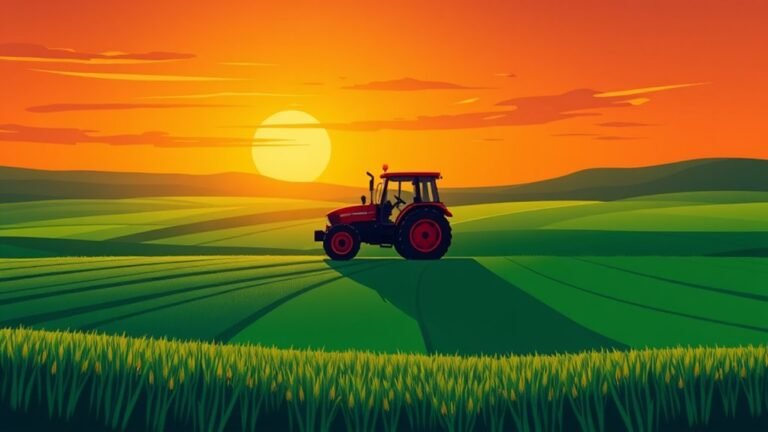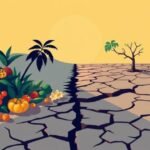Agriculture has its ups and downs, for sure. On the bright side, it fuels local economies and keeps communities fed, creating jobs and fresh food. But, watch out! Practices like over-farming and monocultures can lead to soil problems and water shortages. Plus, the environment sometimes takes a hit with pollution and greenhouse gas emissions. There’s a balancing act here between feeding people and taking care of the planet. What does the future hold? Stick around, and you’ll find out!
Main Points
- Agriculture provides food security and sustains global populations, employing around 1 billion people and supporting local economies.
- Sustainable farming practices enhance soil health and biodiversity, addressing environmental challenges like soil degradation and water depletion.
- Intensive farming can lead to soil erosion, water pollution, and contribute to greenhouse gas emissions, threatening ecological balance.
- Local food production reduces carbon footprints, offering fresher produce and fostering community engagement through farmers’ markets.
- Historical agricultural advancements have improved yields, but modern methods must balance productivity with environmental sustainability for future resilience.
Is Agriculture Sustainable Long-Term?
Is agriculture really sustainable in the long run? This is a question that farmers, scientists, and even dinner table thinkers are pondering.
While sustainable agriculture aims to keep our food systems healthy and productive, challenges like soil degradation and water depletion loom large. Modern technology, such as precision agriculture, offers exciting solutions by maximizing resources and minimizing waste.
But let’s not forget, climate change is a sneaky villain, threatening crop yields and food security. It’s clear that a shift towards organic farming or agroforestry could help boost biodiversity and soil health.
Balancing economic needs with environmental care is key. So, can agriculture modify and thrive for years to come? The answer may lie in how we embrace these groundbreaking practices.
Pro #1. Boosts Local Economies Significantly
Agriculture isn’t just about growing food—it’s a powerhouse for local economies. With around 1 billion people employed in farming worldwide, it creates countless employment opportunities, especially in rural areas. When farmers sell their crops and livestock, that money circulates, helping local businesses thrive. Think of it as a big economic hug!
Plus, agriculture boosts demand for services like transportation and machinery, leading to even more job creation. It also plays an essential role in food security, making communities more self-sufficient and less reliant on imports.
Local farmers’ markets bring everyone together, supporting homegrown goods and encouraging sustainable practices. In short, agriculture fuels local economies and keeps communities vibrant and engaged, making it a fundamental part of life.
Con #1. Soil Degradation and Erosion
Soil, the unsung hero of agriculture, plays an essential role in producing the food we eat every day.
Nevertheless, it faces serious threats like soil degradation and erosion. Over-farming and deforestation are like a bad haircut for our soil, making it lose its quality and health. Erosion, which is when topsoil is blown or washed away, can rob us of up to 75 billion tons of fertile soil each year!
Intensive farming and monoculture practices don’t help either; they strip the soil of nutrients, leading to a cycle of declining crop yields.
But there’s hope! Sustainable practices like crop rotation and no-till farming can help restore soil health, making it a true superhero in feeding the world.
Pro #2. Enhances Food Security Globally
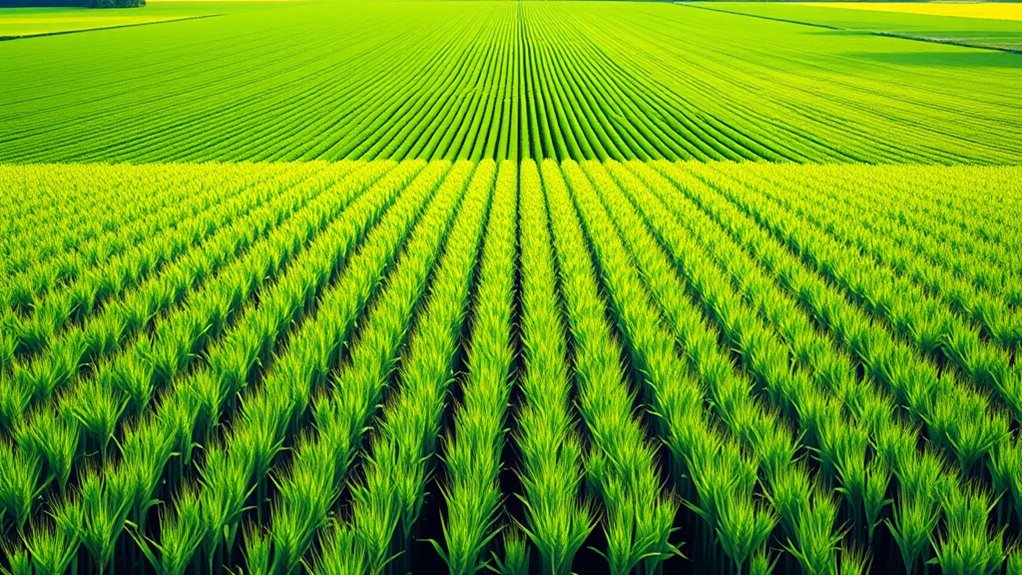
Food security is like a safety net for everyone, ensuring that there’s enough grub on the table no matter where you are in the world.
Agriculture plays an essential role in this, providing a steady food supply that benefits both rich and poor countries alike. Thanks to groundbreaking farming techniques, global cereal production soared from 1.8 billion tons in 1961 to over 2.7 billion tons by 2020, showcasing agriculture‘s positive effects on food availability.
Sustainable practices, like crop rotation, keep soil healthy and productive, fundamental for future generations. As the global population is expected to hit 9.7 billion by 2050, increasing food production by 70% becomes imperative, highlighting agriculture’s key role in enhancing food security for all.
Con #2. Water Resource Depletion Risks
When it comes to the world of farming, one might not immediately think about the water situation, but it’s a big deal!
Agriculture is a major player in water resource depletion, with about 70% of our freshwater being used for irrigation. That’s a hefty slice of the pie!
Over the years, some regions have seen groundwater levels drop by over 30 feet—yikes!
Monoculture farming practices, which focus on growing a single crop, can worsen this issue, demanding more water than a variety of crops would.
Plus, the use of chemical fertilizers can pollute local water sources, making it tough to manage what’s left.
As climate change kicks in, the risk of water scarcity grows, affecting food production and our future.
Pro #3. Improves Rural Infrastructure Development
Agriculture isn’t just about planting seeds and harvesting crops; it’s like a superhero for rural communities!
Farming drives the need for better roads and bridges, making it easier to transport goods to markets. When agricultural activities pick up, essential services such as schools, healthcare, and irrigation systems often follow, boosting community spirit.
This investment in agriculture creates jobs and attracts businesses, leading to the construction of storage facilities and processing plants. With improved infrastructure, farmers gain better access to technology and information, helping them use natural resources more efficiently.
Plus, rural electrification and clean water systems often arrive hand-in-hand with agricultural growth, making life a whole lot better.
In short, agriculture truly helps build stronger rural foundations!
Con #3. Chemical Runoff Pollution
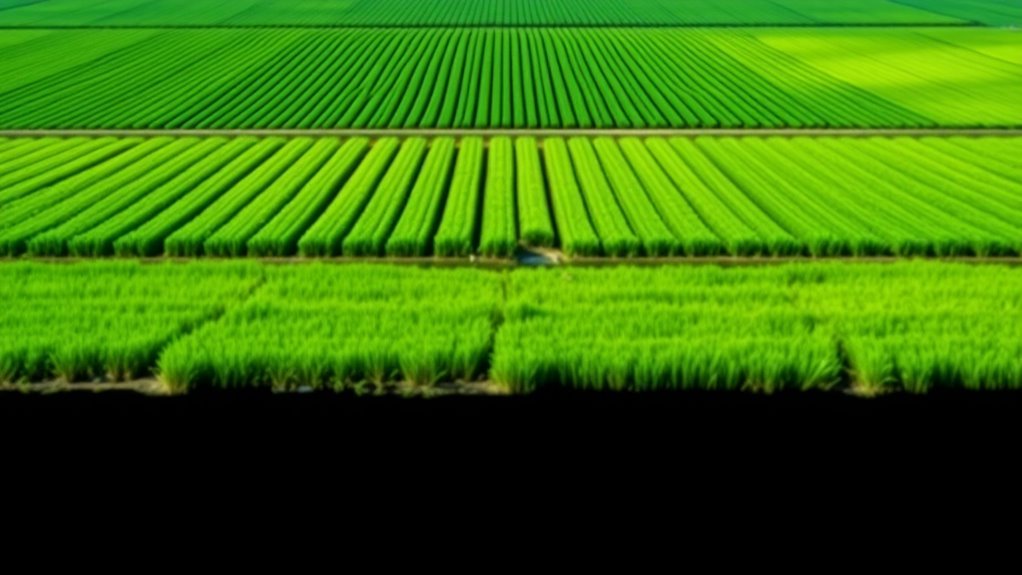
Chemical runoff pollution is a sneaky little troublemaker that can have a big impact on our water systems. When farmers use fertilizers, pesticides, and herbicides, a little rain can wash these chemicals into rivers and lakes.
This leads to some major issues, like harmful algal blooms that suck the oxygen out of the water, making it tough for fish and other creatures to survive. The U.S. Environmental Protection Agency warns that this runoff is a top cause of water pollution, affecting over half of our rivers!
While using chemicals can improve soil and boost crop yields, the disadvantages, like nutrient pollution and ecosystem damage, can’t be ignored. Balancing these advantages and disadvantages is essential for a healthier environment.
Pro #4. Increases Job Opportunities Locally
While many might think of agriculture as just a way to grow food, it’s actually a powerhouse for local job creation. Agriculture creates job opportunities in farming, processing, distribution, and retail, boosting local economies.
In fact, the Food and Agriculture Organization (FAO) notes that up to 40% of the workforce in developing countries is tied to agriculture. As agribusiness grows, so does the demand for skilled labor, opening doors for education and training.
Plus, local agriculture helps stimulate related industries, like equipment manufacturing, creating even more jobs. Employment in agriculture often provides stability, too, as food production remains essential, regardless of economic ups and downs.
Con #4. Loss of Biodiversity
As farming practices expand, the natural world feels the squeeze, and biodiversity takes a hit. The widespread use of monoculture, where only a few crop varieties are grown, reduces the chances of maintaining vegetation that supports diverse wildlife. This can lead to habitat destruction, as forests and grasslands turn into fields of corn or soy.
With about 1 million species at risk of extinction due to human activities, including agriculture, the stakes are high. The practices employed in industrial farming, like heavy pesticide use, harm not just pests but also helpful insects and soil microbes.
This loss of biodiversity can mean fewer pollinators and reduced soil fertility, jeopardizing food security and agricultural productivity. It’s quite a pickle!
Pro #5. Supports Local Food Production
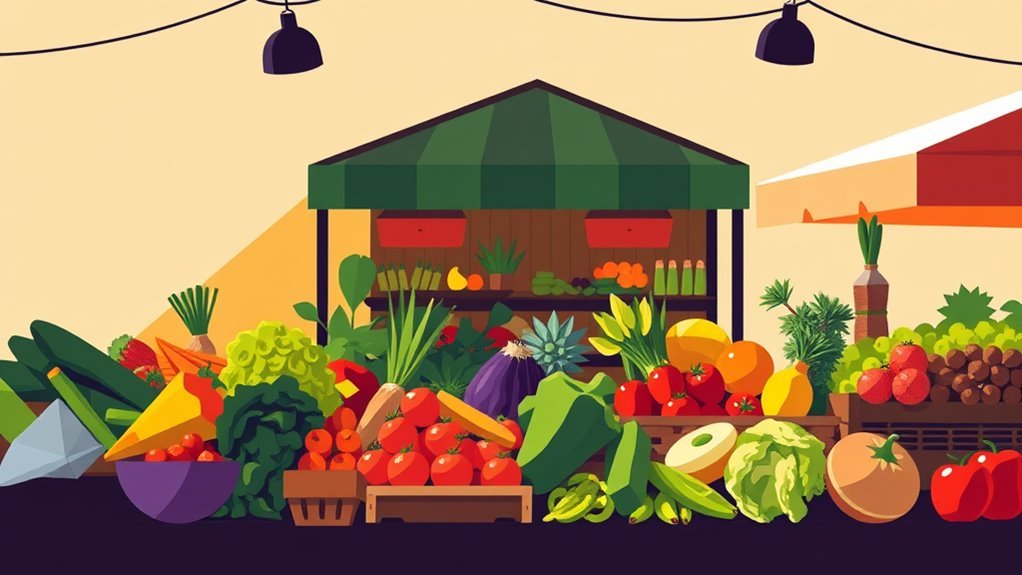
Supporting local food production is like giving a high-five to your community, and it comes with a bunch of benefits that everyone can appreciate.
By focusing on local farms, communities keep money circulating within their area, boosting local economies and creating jobs. Plus, these farms often embrace sustainable practices, which improve soil health and biodiversity. It’s a win-win!
Consumers enjoy fresher produce with more flavor and nutrients, all while reducing the carbon footprint from long-distance food transport.
Local food production also encourages people to connect with their food sources, cultivating awareness about agricultural practices.
Con #5. Increased Greenhouse Gas Emissions
Agriculture might seem like the shining star of local food production, but there’s a gray cloud hovering overhead when it comes to greenhouse gas emissions. In fact, agriculture is responsible for about 10-12% of the world’s total greenhouse gas emissions!
A big part of that comes from livestock production, especially cattle, which release methane during digestion—talk about a gaseous escape!
Then there are synthetic fertilizers; they might help crops grow, but they also release nitrous oxide, a greenhouse gas that’s 298 times more potent than carbon dioxide.
Not to mention, when forests are cleared for farming, essential carbon sinks disappear, leading to even more CO2 in the atmosphere.
Pro #6. Supports Renewable Energy Initiatives
While many might not immediately connect farming with renewable energy, it turns out that agriculture can play a vital role in this exciting arena.
Farmers can grow biomass feedstocks for bioenergy, helping to reduce reliance on fossil fuels. By placing solar panels on their land surface, they can generate clean energy while growing crops, making farming more sustainable.
Plus, using anaerobic digestion systems can turn livestock waste into biogas, which helps reduce greenhouse gas emissions.
Another cool approach is agrovoltaics, where crops thrive under solar panels, maximizing land use.
With sustainable practices, farmers can also improve carbon sequestration in soil, contributing to climate goals while making life a bit easier regarding trade.
Who knew farming could be so green?
Con #6. Increased Pesticide Usage Risks
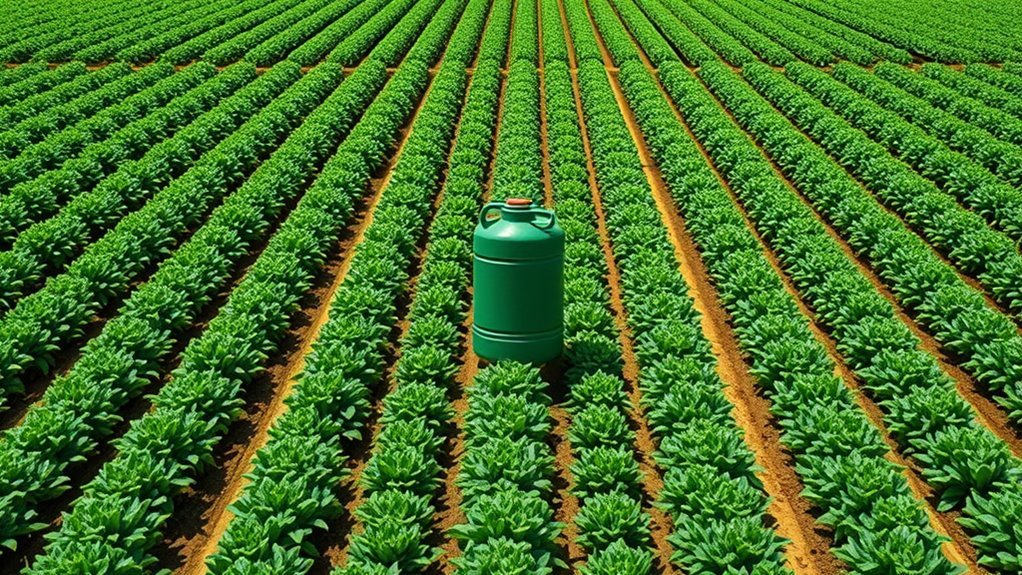
When it comes to farming, the use of pesticides can feel a bit like a double-edged sword. While they help meet the diverse needs of a growing population, with over a billion people to feed, they come with considerable risks.
Increased pesticide usage has been linked to a decline in pollinator populations, particularly bees, which are crucial for many crops. In addition, chemical runoff from farms can pollute rivers and lakes, harming aquatic life.
Farmers also face challenges like pesticide resistance, which can lead to stubborn pests, reduced yields, and skyrocketing costs. Finally, the health concerns associated with pesticide residues on food can make anyone think twice about their dinner plate.
Balancing these factors is essential for sustainable farming practices.
Pro #7. Promotes Crop Diversity Benefits
Imagine walking through a vibrant farm where fields burst with colorful crops instead of a monotonous sea of corn or soybeans. This lively scene is a reflection of the power of crop diversity!
When farmers grow various crops, their fields become resilient warriors against pests and diseases. Picture a superhero farm, adjusting to climate changes while boosting food security.
Plus, diverse crops improve soil health, creating a bustling community of roots and microbes that help nurture the earth. By moving away from monoculture, farmers reduce risks of crop failures.
With a mix of produce, they can meet different market demands, making their wallets happier too. Crop diversity even brings nature’s helpers like pollinators and pest controllers, making farming more sustainable and fun!
Con #7. Soil Health Deterioration
Soil health is like the backbone of farming, and without it, everything starts to crumble.
When farmers rely too much on chemical fertilizers and pesticides, they risk depleting essential nutrients, making the soil less fertile over time. Intensive farming practices, like growing the same crop year after year, can destroy biodiversity, leading to erosion and degradation.
Tilling the soil might seem like a good idea, but it disrupts the natural structure and harms the helpful microbes living there. This means less water retention and more compaction—definitely not good for plants!
Studies show we’re losing a staggering 24 billion tons of fertile soil each year, which threatens the very heart of agriculture. Healthy soil equals healthy crops, and that’s a big deal!
Pro #8. Supports Carbon Sequestration Efforts
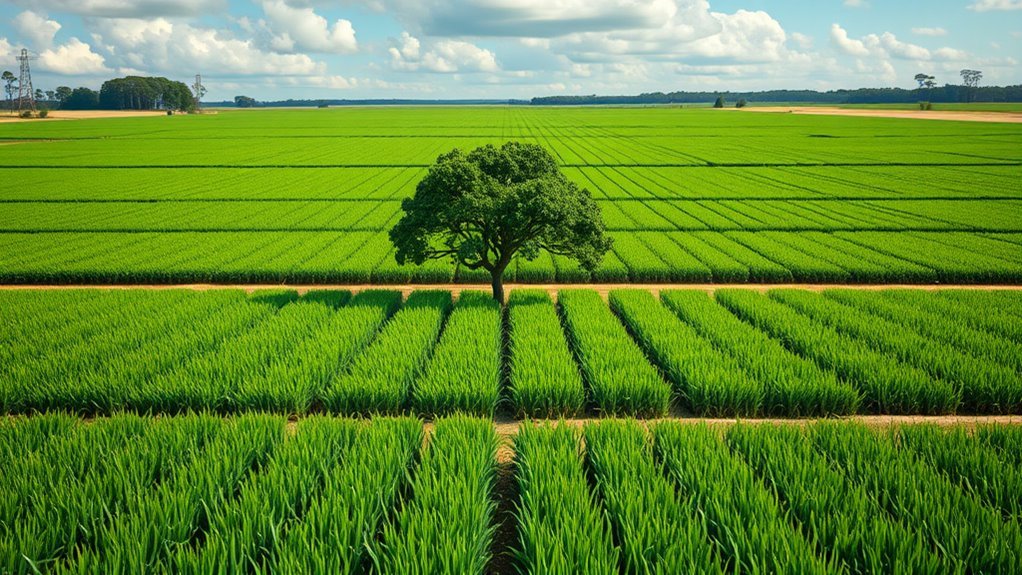
Agriculture has a surprising superpower: it can actually help fight climate change by supporting carbon sequestration efforts.
Practices like agroforestry, which mixes trees with crops, improve carbon storage in both biomass and soil. Then there’s no-till farming, where farmers disturb the soil less, keeping organic matter intact and advancing carbon retention.
Cover cropping is another clever tactic; planting specific crops during off-seasons prevents erosion and builds up organic carbon.
Sustainable pasture management helps grasslands flourish, allowing them to absorb carbon dioxide like champs.
Finally, using perennial crops boosts soil carbon storage thanks to their deep roots.
Con #8. Increased Pesticide Resistance Development
Pests can be a farmer’s worst nightmare, and the overuse of pesticides has turned that nightmare into a full-blown horror movie. With around 500 insect species now resistant to common pesticides, farmers face an intimidating challenge.
Instead of a quick fix, farmers may need to shell out more money for stronger chemicals or investigate other pest control methods. This resistance doesn’t just mean higher costs; it can also lead to lower crop yields, which is a serious threat to food security.
The reliance on chemical solutions can further harm the environment. Thankfully, Integrated Pest Management (IPM) offers a glimmer of hope, combining different strategies to tackle pests more sustainably, allowing farmers to fight back without escalating the horror show.
Pro #9. Promotes Sustainable Farming Practices
Farming isn’t just about growing crops; it’s also about finding ways to grow them responsibly. Sustainable farming practices are like superheroes for our planet!
Techniques like organic farming avoid nasty synthetic chemicals and help keep ecosystems buzzing with life. Plus, agroforestry combines trees and crops, boosting carbon capture and offering farmers extra income—who doesn’t love a diverse paycheck?
Hydroponics, the cool soilless farming method, saves up to 90% more water, making it perfect for year-round harvests. And let’s not forget no-till farming, which keeps soil healthy and reduces erosion, allowing nature to thrive.
Con #9. Increased Greenhouse Gas Emissions
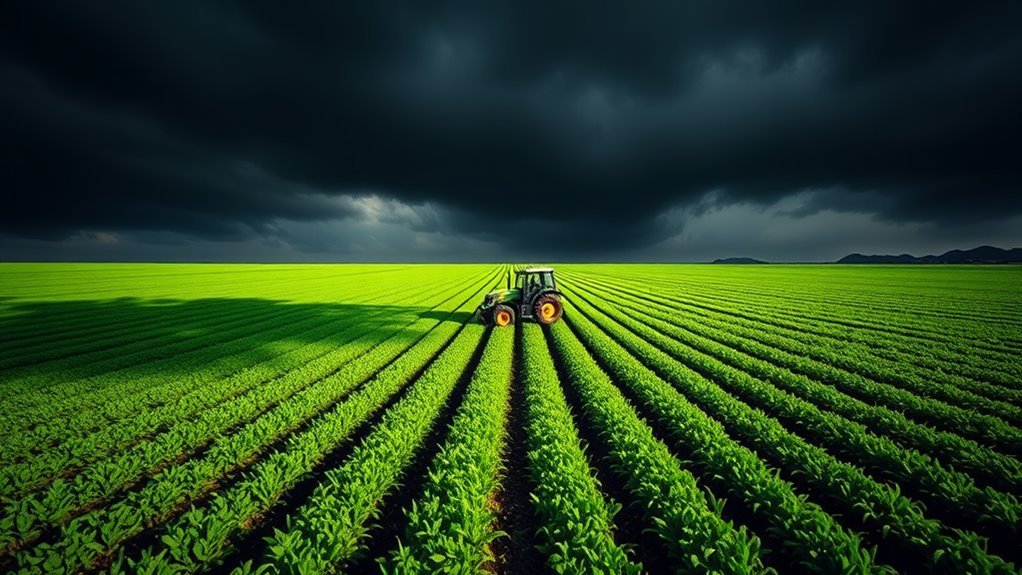
While many people appreciate the benefits of agriculture, it’s important to acknowledge the darker side of the farming world, especially when it comes to greenhouse gas emissions.
Industrial agriculture is a notable player in this game, contributing around 14-18% of global emissions. Practices like livestock production release a hefty dose of methane—about 100 kg per cow each year!
And let’s not forget those synthetic fertilizers; they emit nitrous oxide, a greenhouse gas that’s 298 times better at trapping heat than carbon dioxide.
Deforestation for farming also steals carbon dioxide from trees, accounting for roughly 10% of yearly emissions.
With monoculture farming, biodiversity takes a hit, making it harder for ecosystems to absorb carbon.
It’s a tangled web!
Pro #10. Supports Agroecological Farming Methods
Agroecological farming methods are like a revitalizing change in the world of agriculture, bringing a delightful mix of nature’s wisdom and smart farming practices. By focusing on biodiversity and ecological sustainability, these methods integrate crops and livestock, which helps improve soil health and boosts resilience against pesky pests and diseases.
Plus, they use natural inputs instead of synthetic fertilizers, reducing pollution while promoting a balanced ecosystem. Techniques like crop rotation and intercropping not only amplify nutrient cycling but also prevent soil erosion, ensuring long-term productivity.
What’s more, supporting local food systems nurtures community engagement and social equity. Research shows that agroecological farming can even increase crop yields by 20-60% in resource-poor settings, proving it’s a smart path for sustainable development.
Con #10. Increased Reliance on Monocultures
As farming techniques evolve, the trend of relying on monocultures has taken center stage, inviting both admiration and concern.
On one hand, planting the same crop can lead to higher yields and lower costs—who doesn’t like savings?
Nevertheless, this practice can make ecosystems more vulnerable. With less biodiversity, pests and diseases can wreak havoc on single-crop systems, leading to food shortages.
Plus, continuously planting the same crop can drain specific nutrients from the soil, causing it to degrade over time.
And let’s not forget climate change! Diverse crops help us adjust, while monocultures may struggle.
Agricultural Evolution Over Centuries
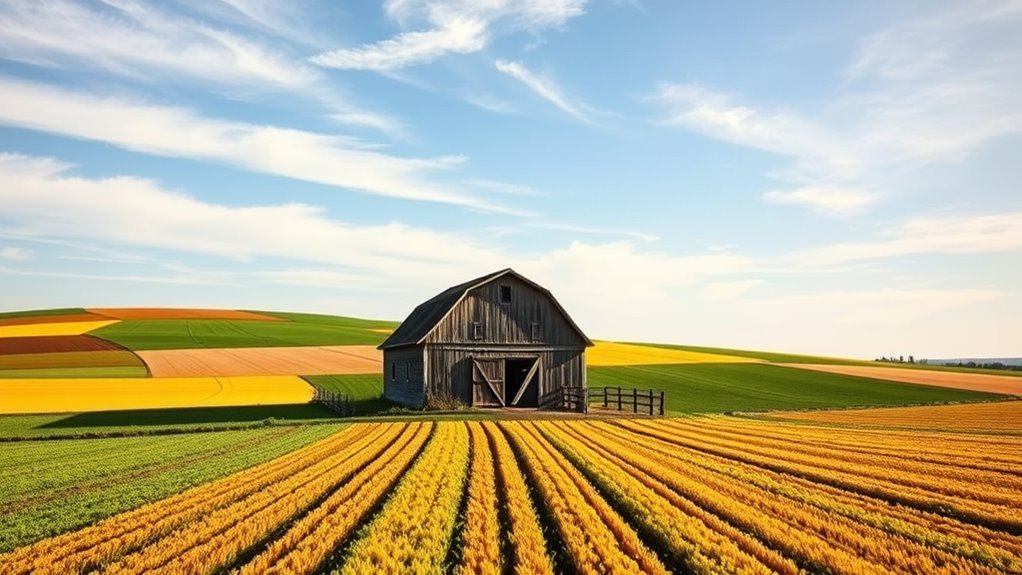
Throughout history, agriculture has undergone an extraordinary transformation, evolving from simple beginnings to the complex systems we see today.
It all started around 10,000 BCE with the Neolithic Revolution, when humans shifted from wandering for food to settling down and growing it.
Fast forward, and we see agriculture morph from subsistence farming—just enough food for families—to a commercial powerhouse aimed at profits.
Traditional methods gave way to modern techniques, like precision agriculture, which uses technology to boost yields.
The mid-20th century’s Green Revolution introduced high-yield crops and fertilizers, ramping up food production but also causing some headaches for the environment.
Today, there’s a push for sustainable practices, showing that farmers are starting to think about the long-term health of our planet.
Final Thoughts
When considering the journey of agriculture, it’s clear that this field has shaped human civilization in monumental ways.
Agriculture has boosted food production, which is essential for feeding our growing population. Nevertheless, it also comes with challenges, like climate change and pesky pests.
The shift to farming has spurred economies and job growth, but it can lead to land disputes and social inequalities.
Modern methods, while efficient, can harm the environment, causing soil issues and reducing biodiversity.
Thankfully, sustainable practices like organic farming and agroforestry are stepping in to help.
The key is finding a balance between enjoying agriculture’s benefits while being responsible stewards of the earth.
After all, who wants to trade a healthy planet for a full plate?
References
National Agricultural Library (NAL): One of the world’s largest agricultural research libraries.
USDA Research and Science: USDA’s agricultural research initiatives.
AGRIS: Global database of agricultural science and technology.
FAOSTAT: Comprehensive agricultural statistics from FAO.
International Food Policy Research Institute (IFPRI): Research on food policies and agricultural development.
CGIAR: Global partnership for agricultural research.
AgNIC: Collaborative access to agricultural information.
Gale Agriculture Resources: Scholarly agriculture publications and databases.
Michigan State University Agriculture Research Guide: Comprehensive guide to agricultural research materials.
Rutgers University Agricultural Science Resources: Databases and web resources on agricultural science.

